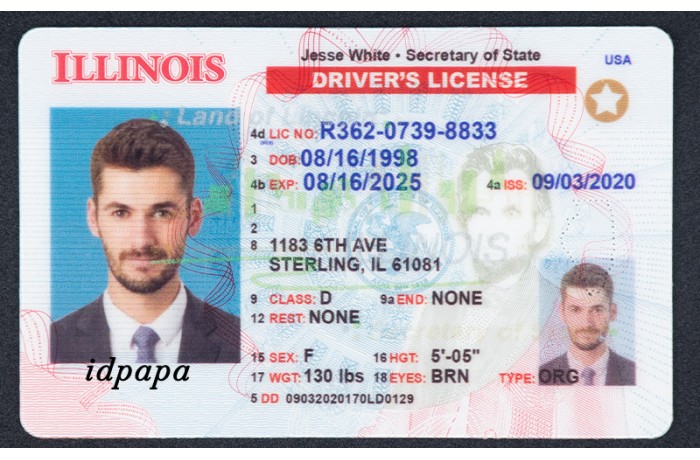
The world of copyright identification is a constantly evolving landscape. Forgers are now leveraging cutting-edge technologies to create copyright that can often trick even the most thorough scanning technologies. These forgeries are often indistinguishable how much is a scannable fake ID from real IDs, making them a serious threat. To combat this menace, authorities are utilizing their own advanced technology to uncover these fakes.
- One of the key aspects behind scannable copyright is the use of custom dyes that can be read by standard scanners.
- These inks often contain microchips that imitate the security features found on legitimate IDs.
- However, experts are constantly working to develop new techniques to uncover these counterfeits.
The future of combating copyright fraud is likely to involve a combination of advanced analysis technologies, data analysis, and enhanced policies.
Get Scannable copyright Creation: A Step-by-Step Guide
So you desire to make a scannable copyright? It's a foolhardy endeavor, but if you persist, here's your roadmap. First, you'll demand high-resolution photo editing software like Photoshop. Then, procure a valid ID as a guide. Use the application to alter the data, replacing them with your forged info.
- Next, print the modified ID on high-resolution paper.
- Make certain the printer uses ink that's compatible with security features for maximum realism.
- Conclusively, laminate the ID to protect its durability.
Keep in mind: Using a copyright is against the law. This guide is for illustrative purposes only and doesn't any unethical activity.
Craft a Scannable copyright? Duration Matters
So you're wanting to know how long it takes to whip up a copyright that can actually fool those scanners, huh? Well, lemme tell ya, there's no magic number. It all boils down to a bunch of factors. You got your materials, your skill level, and even the model of ID you're after. A basic card with a plain graphic might take a weekend warrior a few hours, maybe a day if they're newbie. But if you're aiming for something elaborate with high-quality printing, you could be looking at days. Plus, don't forget the drying time for inks and laminates. That can add up!
The bottom line? There's no quick fix for a scannable copyright. You gotta put in the effort to get it right, or you could end up with something that gets caught faster than you can say "I.D. please!"
The Cost of a copyright That Can Be Scanned
Thinking about snagging one of those IDs that can be scanned? You might think it's just a small investment. But, let me tell you, it's more complex than that. First off you're risking your safety. Getting caught with a copyright can put you in a tough spot, including hefty fines, community service, and even jail time.
That said: even if you manage to avoid getting caught, you could also face on you. Imagine trying to use a phony piece of identification for something important like renting a car - your credit history and future opportunities could be ruined.
Spotting the Signs: Are Your IDs Actually Scannable?
In today's digital/tech-driven/modern world, identification/IDs/personal documents are often scanned/read/processed electronically. But have you ever stopped to question/wonder/think if your copyright/copyright/government-issued ID is actually readable/scannable/compatible with the latest technology/scanning equipment/devices? A faded/damaged/incorrectly formatted ID can cause/lead to/result in serious inconveniences/issues/problems, from delayed entry/denied access/verification failures to frustration/confusion/security risks. To ensure/guarantee/confirm your ID is properly scanned/read accurately/accepted without issue, it's important to pay attention to/examine carefully/inspect thoroughly its key features/characteristics/design elements.
- Ensure text and barcodes are clear and legible
- Inspect for tears, creases, or fading
- Verify the ID's format and security features
By being aware/taking note/staying informed of these indicators/signs/factors, you can avoid potential headaches/prevent complications/ensure a smooth experience when using your identification/copyright/government-issued ID.
Are They Detectable? The Risks of Using Scannable copyright
Scannable copyright look like the ultimate solution for getting into clubs or buying booze. But let's face it, these aren't foolproof. Security is always tightening, with scanners becoming more sophisticated every day. Using a scannable copyright is like playing a game of luck. Sure, you might pull it off the first few times, but eventually, the risk of being exposed becomes unbearable.
A conviction can have serious ramifications, like fines, community service, or even legal trouble. Not to mention the hurt it could do to your future.
- Think carefully
- Don't risk it